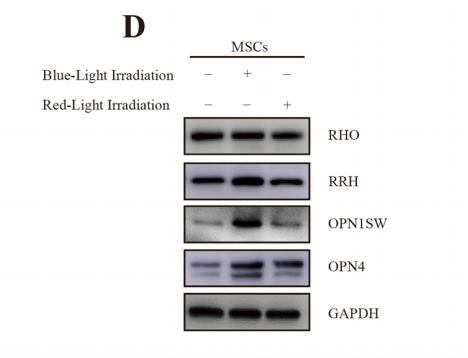Peropsin Antibody - #AF9153
| Product: | Peropsin Antibody |
| Catalog: | AF9153 |
| Description: | Rabbit polyclonal antibody to Peropsin |
| Application: | WB IF/ICC |
| Cited expt.: | WB |
| Reactivity: | Human |
| Prediction: | Pig, Bovine, Sheep, Dog, Chicken |
| Mol.Wt.: | 37kDa; 37kD(Calculated). |
| Uniprot: | O14718 |
| RRID: | AB_2843343 |
Related Downloads
Protocols
Product Info
*The optimal dilutions should be determined by the end user.
*Tips:
WB: For western blot detection of denatured protein samples. IHC: For immunohistochemical detection of paraffin sections (IHC-p) or frozen sections (IHC-f) of tissue samples. IF/ICC: For immunofluorescence detection of cell samples. ELISA(peptide): For ELISA detection of antigenic peptide.
Cite Format: Affinity Biosciences Cat# AF9153, RRID:AB_2843343.
Fold/Unfold
OPSX; OPSX_HUMAN; Retinal pigment epithelium derived rhodopsin homolog; Rrh; Visual pigment like receptor peropsin.; Visual pigment-like receptor peropsin;
Immunogens
A synthesized peptide derived from human Peropsin, corresponding to a region within the internal amino acids.
Found only in the eye, where it is localized to the retinal pigment epithelium (RPE). In the RPE, it is localized to the microvilli that surround the photoreceptor outer segments.
- O14718 OPSX_HUMAN:
- Protein BLAST With
- NCBI/
- ExPASy/
- Uniprot
MLRNNLGNSSDSKNEDGSVFSQTEHNIVATYLIMAGMISIISNIIVLGIFIKYKELRTPTNAIIINLAVTDIGVSSIGYPMSAASDLYGSWKFGYAGCQVYAGLNIFFGMASIGLLTVVAVDRYLTICLPDVGRRMTTNTYIGLILGAWINGLFWALMPIIGWASYAPDPTGATCTINWRKNDRSFVSYTMTVIAINFIVPLTVMFYCYYHVTLSIKHHTTSDCTESLNRDWSDQIDVTKMSVIMICMFLVAWSPYSIVCLWASFGDPKKIPPPMAIIAPLFAKSSTFYNPCIYVVANKKFRRAMLAMFKCQTHQTMPVTSILPMDVSQNPLASGRI
Predictions
Score>80(red) has high confidence and is suggested to be used for WB detection. *The prediction model is mainly based on the alignment of immunogen sequences, the results are for reference only, not as the basis of quality assurance.
High(score>80) Medium(80>score>50) Low(score<50) No confidence
Research Backgrounds
May play a role in rpe physiology either by detecting light directly or by monitoring the concentration of retinoids or other photoreceptor-derived compounds.
Membrane>Multi-pass membrane protein.
Found only in the eye, where it is localized to the retinal pigment epithelium (RPE). In the RPE, it is localized to the microvilli that surround the photoreceptor outer segments.
Belongs to the G-protein coupled receptor 1 family. Opsin subfamily.
References
Application: WB Species: Human Sample: mesenchymal stem cells
Restrictive clause
Affinity Biosciences tests all products strictly. Citations are provided as a resource for additional applications that have not been validated by Affinity Biosciences. Please choose the appropriate format for each application and consult Materials and Methods sections for additional details about the use of any product in these publications.
For Research Use Only.
Not for use in diagnostic or therapeutic procedures. Not for resale. Not for distribution without written consent. Affinity Biosciences will not be held responsible for patent infringement or other violations that may occur with the use of our products. Affinity Biosciences, Affinity Biosciences Logo and all other trademarks are the property of Affinity Biosciences LTD.

